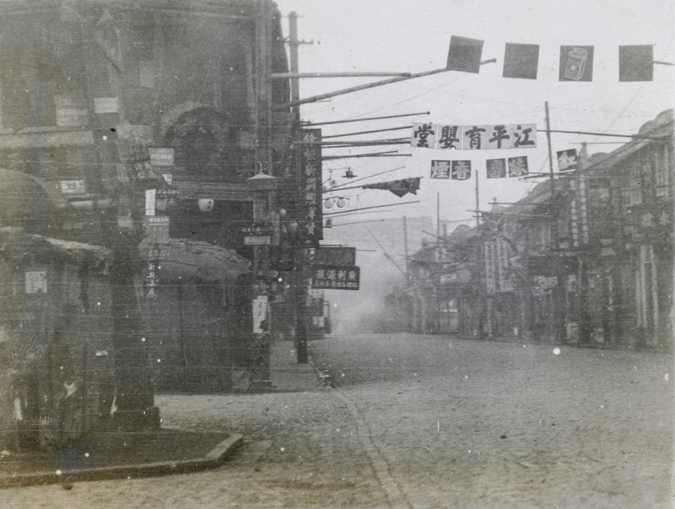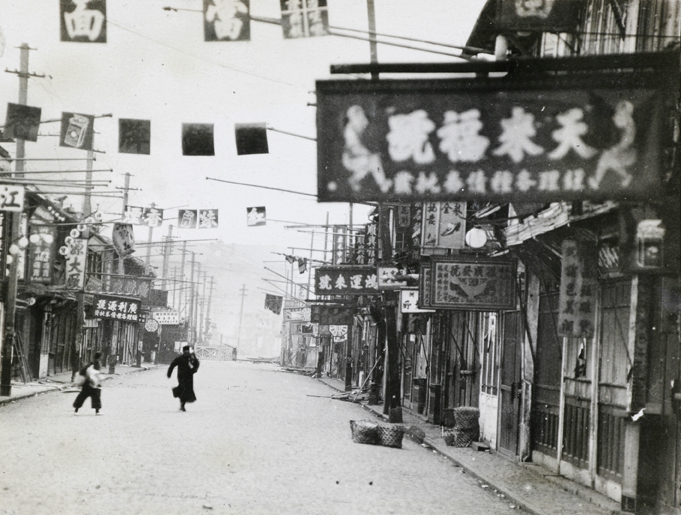In mid-late March 1927 the force of the Guomindang’s National Revolutionary Army moved into the city of Shanghai. Communist insurrections had already taken place, but the forces of a regional militarist, Sun Chuanfang (孙传芳), including units of refugee Russian soldiers, were still in place. These shots, probably taken on 22 March, show the eerie quiet of the interregnum. These busy streets are mostly empty, a few stragglers seek safety. Baskets have been dropped by others in the panic of flight.
The International Settlement and the French concession had thrown up barbed-wire barricades and gates. They aimed to to stem the flow of refugees seeking shelter from the Chinese-administered parts of the city, prevent the defeated from seeking sancturary, and were also worried that the Guomindang forces, buoyed by success, and enthused with anti-imperialist sentiment, and allied to the Chinese Communist Party, might move to take over the foreign-controlled zones. This was an acute moment of international crisis. In the event there was no Guomindang attack on the settlements, and within a month the National Revolutionary Army’s commander, Chiang Kaishek, had launched a debilitating attack on his Communist Party allies.
These photographs came from the colleciton of William Armstrong, who for many years had been chief of the Detective Branch (the CID) of the international settlement’s Shanghai Municipal Police. Armstrong was no friend of the Guomindang, but the International Settlement quickly started working with Chiang, and assisted the April coup against the Communists.


